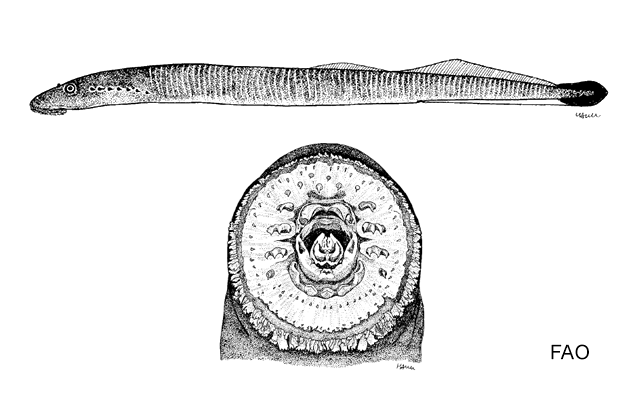|
Dorsal spines (total): 0-0; Anal spines: 0-0. Adults: 17.6-22.8 cm TL; body proportions, as percentage of TL (based on 6 specimens measuring 18.6-22.8 cm TL): 12.3-14.5 prebranchial length, 9.2-10.6 branchial length, 42.7-48.6 trunk length, 28.4-32.7 tail length, 1.7-2.3 eye length and 6.6-7.8 disc length; 5.7 urogenital papilla length (percentage of branchial length in one spawning male measuring 21 cm TL); trunk myomeres, 61-65. Adult dentition: supraoral lamina, 3 unicuspid teeth, the median one smaller than the lateral ones; infraoral lamina, 5 unicuspid teeth; 4 endolaterals on each side; endolateral formula, typically 2-3-3-2, the fourth endolateral can also be unicuspid; 1-2 rows of anterials; first row of anterials, 2 unicuspid teeth; exolaterals absent; 1 row of posterials with 13-18 teeth, of which 0-4 are bicuspid and the rest unicuspid (some of these teeth may be embedded in the oral mucosa); transverse lingual lamina, 14-20 unicuspid teeth, the median one slightly enlarged; longitudinal lingual laminae teeth are too poorly developed to be counted. Velar tentacles in adults, 8-9, with tubercles; median tentacle is about the same size as the lateral ones immediately next to it; body coloration (preserved), dark brown on dorsal, lateral, and ventral aspects; lateral line neuromasts darkly pigmented; second dorsal fin pigmentation, +++; caudal fin pigmentation, +++; caudal fin shape, spade-like; oral papillae, 13. |

